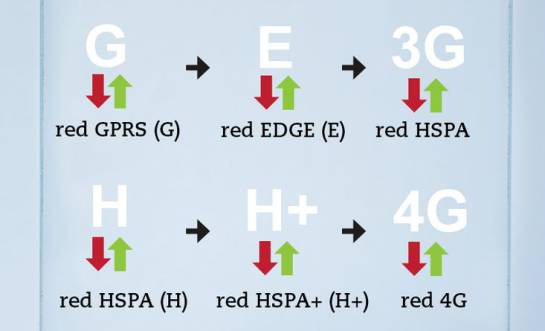
Index:
UPDATED ✅ Do you want to know the definition of 3G and how it beats the old GPRS? ⭐ ENTER HERE ⭐ and Learn all about it ✅ EASY and FAST ✅
Telephone networks have undergone many advances and changes since they were first implemented. One of these was the jump made by the telephone lines of the second generation networks (2G), at the beginning of the third generation (3G).
These first mobile connections are known as: UMTS “Universal Mobile Telecommunications System” and they were the beginning of 3G connections. Which was nothing more than a technological innovation, to cover the needs that its previous generation could not solve.
The networks 3G or UMTS, are not the same networks known as 3G+ or 3.5G+. That is why in this tutorial we are going to explain what a UMTS network is and what it is for? And the difference that exists with others.
What is UMTS or 3rd generation mobile phone networks?

This type of connection is known as the third generation or 3G networks, who is successor to the GPRS network. This was the evolution of GSM networks, which had a great limitation for current needs.
With them data and voice information could not be transmitted simultaneously on 2G lines. Due to this great inconvenience, a new type of mobile connection known as UMTS was created.
In short these are one type of connection for different mobile devices, that allows the transmission of data; (messages, email or browsing) and voice calls simultaneously, without having to cut or pause some of the others. This was a great advance incredibly helped smartphones, that day by day increase their dependence on the data network.
Types of 3G networks
There are different types of 3G networks. You are simply an improvement on this generation that are cataloged as a separate, due to the advances that they brought with them.
Among these we will name the following:
- Network H or HSDPA: It is called (High Speed Downlink Packet Access), although it is commonly known as 3G+, and it turns out to be the optimization of the UMTS/WCDMA spectral technology. This allowed download speeds of up to 14 Mbps to be achieved only in optimal conditions.
- H+ or HSUPA network: Called as (High-Speed Uplink Packet Access or Ascending access of packets at high speed). It is a type of access for mobile phone network data with a higher upload speed (with a range of 7.2 Mbit/s). It is commonly called as network 3.5GPlus.

What is the origin of third generation networks? History and precedents
Before starting to talk about third generation networks, we have to talk a little about their predecessors, that is, the first and second generations. So let’s get started.
During the year 1985, the first generation of networks for mobile equipment (1G) began in Europe, this was known as “TACS” (Total Access Communications System). Which was a type of analog mobile connection that could only transmit voice and not data.
Product to the limitations of the first generation, the connection system is created ““GSM” (Global System for Mobile Communications), with it was the beginning of the second generation (2G). This type of network allowed to transmit data and also voice, with a transmission speed of 9.6 kbit/s. With this it allowed the successful short message system (SMS) to be created.
Around the year 2001, in the United States and Europe, the 2.5G network was created, which included different technologies that facilitated a greater data transmission capacity, providing better speed and a more stable connection.
This is how the network generation was born “GPRS” (General Packet Radio System), which was part of the 2.5G network, coexisting with GSM. Although, it offered a more efficient service for access to IP networks such as the Internet.
Some time later, 3G technologies emerged.. This third generation allowed and reinforced the growth of the new equipment that came onto the market, the well-known smartphones, which made great use of data networks. 3G or UMTS networks allowed mobile devices to transmit a large amount of data without interruptions during calls. Having in turn more secure connections, without interruptions and faster.
Main characteristics of UMTS How good is it?
There are several characteristics that can be named for this type of mobile connection, among them are:
- Allows Internet access, broadband services and international roaming.
- It has a maximum speed of 2 Mbit/s, but only under optimal conditions.
- Audio and video transmission in real time. In addition to higher quality voice transmission that is equal to analog networks.
Compared to its predecessors, it is better and more reliable. But, compared to current technologies, 4G and the new network that is coming 5G, 3G lags behind. For the same reason, if only where you live, you have a 3G, 3G+ or 3.5G mobile connection. You should not worry, since you will have a good data transmission, stable voice and fully functional.
How does 3G beat 2.5G GPRS and which is faster?

The 3G network outperforms the 2.5G network in all respects, not only in the higher data speed, the stability of the calls and the clarity to hear them. If not in a very important factor, and that is that data and voice transmission can be used simultaneously. Advantage that in second generation connections is not possible.
In addition to this, in the third generation new connections were created, which are 3G+ and 3.5G+, which increase data transmission speed, both downstream and upstream. What allows with greater fidelity that video calls are made, both individual or group to practically anywhere in the world.
For this and more, it can be said that third generation networks are faster and superior to second generation networks.
Internet